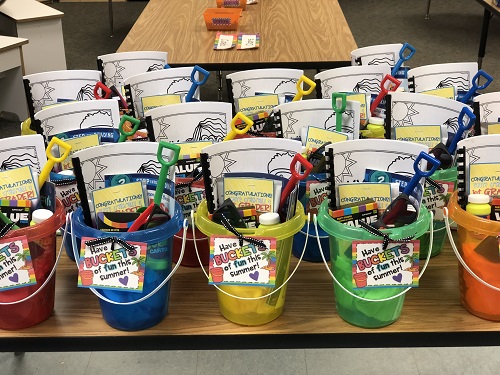
Kids also get a chance to play and work through conflict with other children. And then they have an activity that the teacher plans.” “They talk about different themes every week, like weather, or animals.
#BEST KINDERGARTEN GRADUATION GIFTS FREE#
“They have free play at the beginning of their class and then they gather for a circle with the teacher where they sing and read books,” said Arceo. One way that Pasitos prepares students for school is by getting them familiar with routine and structure. For some of them, this is their very first time they’re attending a playgroup for any social setting.” “They are in our Primero Pasitos, that’s when they’re 16 months to two years. “We are celebrating the ending of the first school year for these children,” said Ingrid Arceo as she looked around at the toddlers swarming the play structure at a neighborhood park in Santa Rosa.

Resources like Pasitos are especially crucial in Sonoma County, where the supply of licensed care has been decimated by repeated natural disasters - the devastating Tubbs Fire in 2017 resulted in the loss of 15 programs, displacing 444 children practically overnight.Īt Pasitos, parents and their kids attend weekly classes, taught in Spanish, at numerous sites throughout the county. One example of a culturally-relevant resource is the Pasitos program, started by Community Action Partnership of Sonoma County in 2006 to help boost school readiness for the county’s Latinx communities. These resources can help parents navigate the first few years when child care is hardest to find and when kids’ neural networks are developing at a rapid rate. And state programs often contract with local nonprofit organizations to provide culturally-relevant programming. Statewide initiatives like Early Start and First 5 California offer developmental assessments and tools to help build early literacy and numeracy skills at home. Tell us: What else do you need a guide on right now?īut for the many Californians who don’t qualify for public programs and who cannot find or afford early childhood care on their own, there are some parenting resources and support systems in place.There are state and federal no-cost or subsidized child care programs for families that receive CalWORKS benefits, for children experiencing homelessness and abuse, some foster children, and for families who meet low-income requirements. Preparing for kindergarten without child careĬalifornia is in the process of expanding transitional kindergarten to include all 4-year-olds, which will help close the school readiness gap for children who don’t have access to private preschool. What early learning and development resources does my Bay Area county offer?.What early learning and development resources does the state offer?.How can I improve my kid’s “kindergarten readiness”?.What are my child’s developmental milestones to know?.Keep reading to learn why preparing a child for kindergarten is so important, and about the tools available to help California families.


We created this guide with those parents in mind, to help connect them to resources so that they don’t have to face the school readiness challenge alone.

No matter the situation, there are still lots of things California parents can do to prepare their children for kindergarten, even if child care and preschool are not viable options. So how can parents be sure that their children are growing and learning at a healthy pace without the help of early childhood educators? Others either don’t have care close by or the available care doesn’t match up with their work schedules. Many parents want to place their kids in child care, but don’t qualify for state-subsidized care and can’t afford private care. That loss in care will likely affect elementary classrooms down the line because child care programs, including preschool, play a huge role in preparing children for kindergarten, and influence kids’ academic performance throughout elementary school. One estimate found that funding loss could cause more than 13,000 child care programs in California to close and more than 84,000 kids to lose child care. In 2018, The Center for American Progress found that about 51% of Americans and 60% of Californians lived in a “child care desert,” where the supply of licensed child care is not enough to meet the demand.įinding child care could get even harder when stabilization funding from the federal American Recovery Plan Act (ARPA) ends Sept. Seventy-four percent of parents who responded to a nationwide survey in 2022 (PDF) reported that child care was difficult to access. T’s a harsh reality that the first few years of being a parent, when you’re operating on little sleep and learning a completely new set of skills, are some of the most important years in a child’s brain development.Īmerica’s child care shortage makes the first few years even trickier for parents to navigate.


 0 kommentar(er)
0 kommentar(er)
